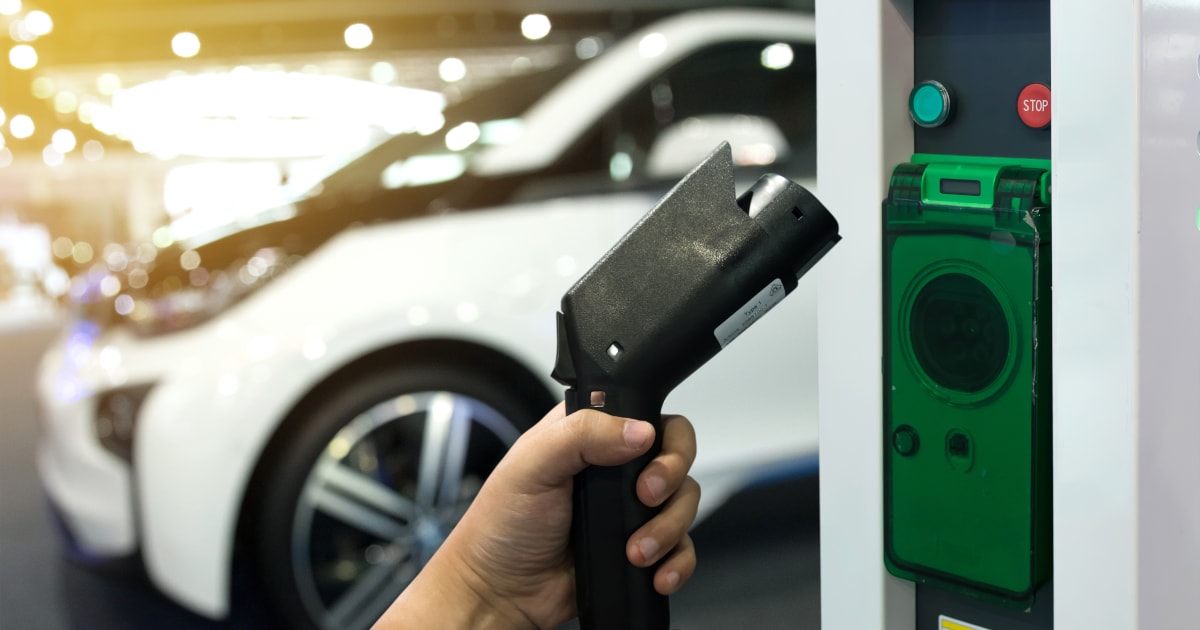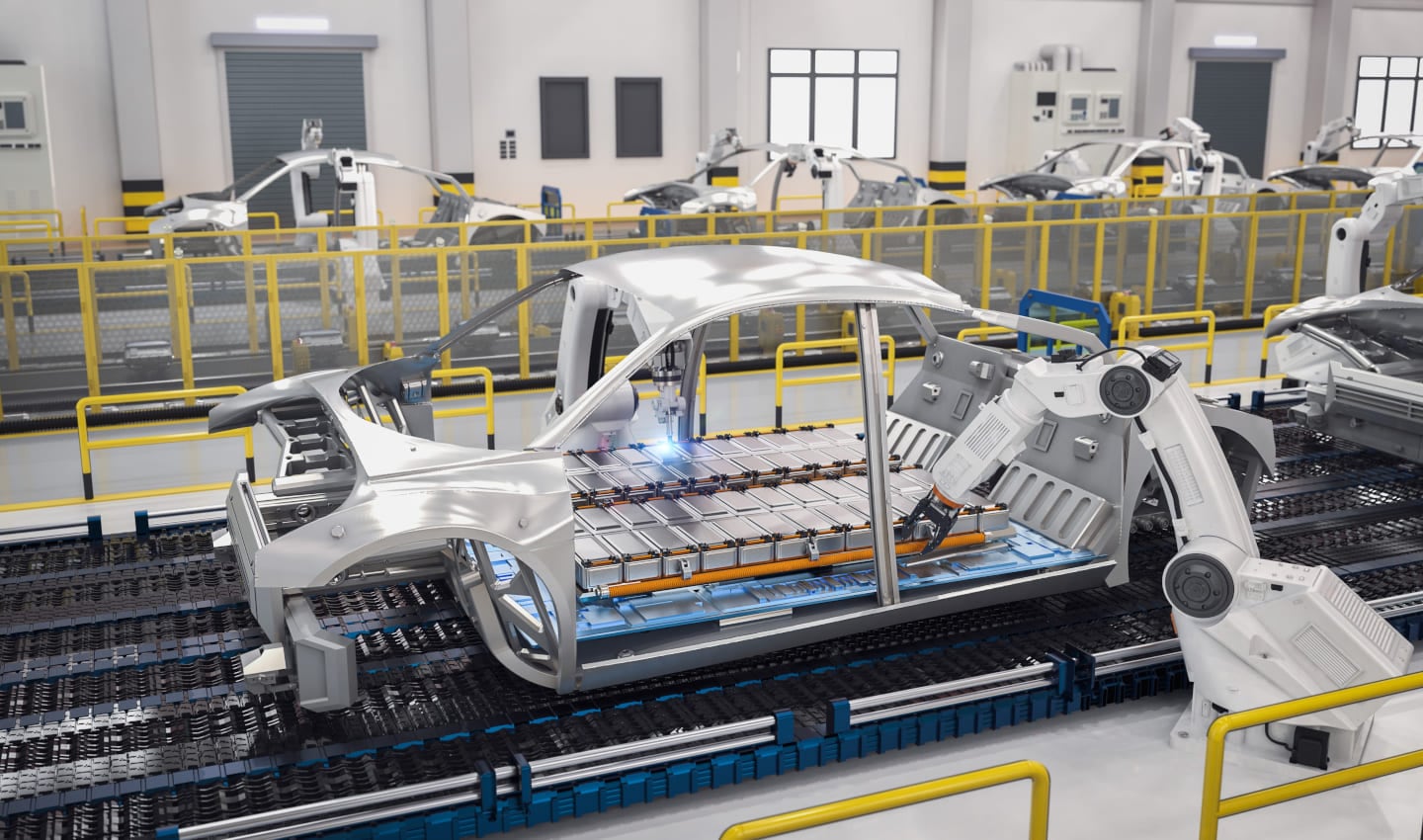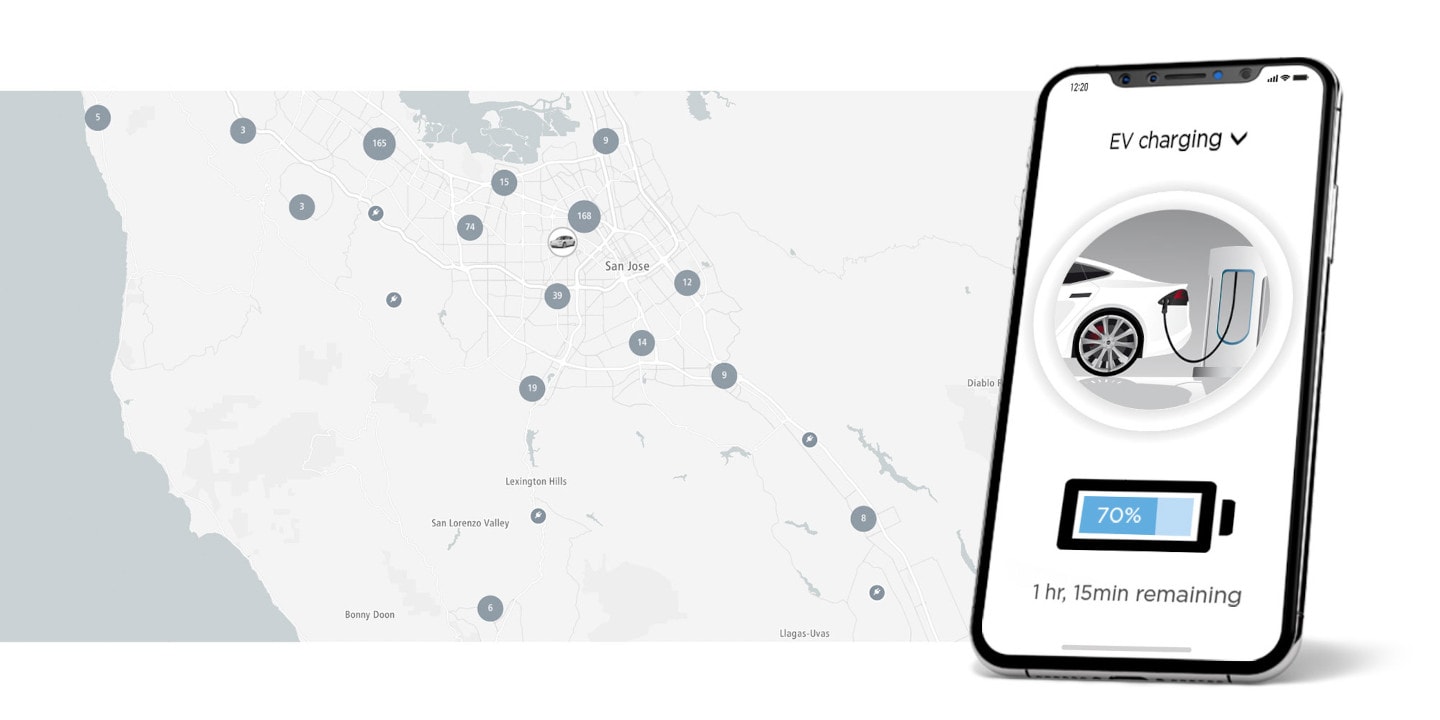
Sadly, the answer to that question isn’t simple. It pays to think of charging an EV as something entirely new, don’t compare it to what you would have done with your gasoline vehicle. There are many factors to consider when charging an EV, all of which affect how fast it can charge and how long you’ll spend at a charger.
Filling up a gasoline vehicle is simple: you pull up to a pump, put the nozzle in the car, hold the trigger and wait until it clicks. The time it takes depends on the flow rate of the pump (which is pretty much the same everywhere you go) and how empty the tank is. In most cases, you’ll fill up in just a few minutes, so it doesn’t bear thinking about.
On the surface, EVs are a bit more complicated. But when you know the basics, it's no more difficult.
The time is takes to fully charge your EV depends on how empty its battery is, the speed of the charger and its connector, the size of the battery and the vehicle’s charging curve.
Battery size matters
One of the major variables that affects how fast an EV can charge is the size of its battery. All things being equal, an EV with a bigger battery will take longer to charge. You could say it’s like how an ICE car with a bigger tank would take longer to fill.
EVs come in all shapes and sizes, and as carmakers expand their EV lineups, they're only going to get ever more diverse in their form.
Cars like the Renault Zoe have relatively small batteries, the current version has a battery capacity of 55 kWh, the GMC Hummer Pickup EV on the other hand has a useable battery capacity of 212 kWh. At the time of writing, most EVs have a battery somewhere around 70 to 80 kWh in capacity.
Putting that into less abstract numbers, charging a Renault Zoe from a standard (11 kW) home charger would take about five hours. Charging the Hummer from the same charger would take about 20 hours.
There are tradeoffs between big and small battery EVs. Small ones, while they charge quicker, won’t be able to drive as far between charges, so you’ll be stopping to charge more often. EVs with larger batteries can drive much further between charges, but will then have to spend longer charging when it does run out of juice. Of course, this is only the case if you drive your electric car until it's empty and charge up again until it's full. Things get a little more complicated when you introduce fast-charging capabilities and variable charging curves.
 An EV battery being installed by robots in the floor of an EV. EVs with bigger batteries will take longer to charge but have more range. Smaller EVs don’t take as long to charge but can’t drive as far between charges. It’s all about balance.
An EV battery being installed by robots in the floor of an EV. EVs with bigger batteries will take longer to charge but have more range. Smaller EVs don’t take as long to charge but can’t drive as far between charges. It’s all about balance.
EV charger power (and speed)
Let’s say you’ve bought an EV, and it has a 75 kWh battery — a decent size, good for a few hundred miles of driving at a time. Now, you don't need to worry about the size of the battery's impact on charging, as your battery capacity is consistent. But even so, there are other variables that affect charging time.
The amount of power the charger can deliver will also impact overall charging time.
As a general rule, the more kWh that a charger can supply to your vehicle, the faster it will charge. There are limits though, EVs have an upper limit with how fast they can charge and not all can accept the same amount of power. EV chargers are getting more powerful every day, but only the most modern and feature packed vehicles can take advantage of them.
The majority of the EV crowd refer to charging power or speed as the Levels of charging. There are three levels, one being the slowest and three being the fast.
Level 1 charging is essentially when you plug your EV into a conventional household plug. These are very slow, and very low powered. Household plugs were never intended to charge the massive batteries used in electric vehicles, but it’s a useful fallback if it’s all you have access to.
Level 2 charging is the most common and most used form of charger. Level 2 charging requires a dedicated charging unit, one that’s designed to deliver more power than a standard household wall socket. They're typically wired right into the mains, so require specialist installation from a certified professional. Level 2 chargers are the kinds you will likely have at your office, home, or the ones you find at the shops that help top-up your car as do your groceries.
Level 3 charging is the pinnacle of EV charging speed. These chargers use direct current (DC), which allows them to supply a lot more power. These are the kinds of chargers you see on motorways, highways, and interstates. Level 3 chargers are otherwise referred to as ultra-fast or rapid chargers and can supply enough power to charge your EV from 5% to 80% in well under an hour in many cases.
Charging curves, state of charge and finding the sweet spot
This is where things get a little more complicated.
Regardless of how big your EV's battery is or how much power a charger can supply to it, the rate at which your EV will charge isn’t linear. And pretty much every model of EV has different charging characteristics.
There are some simple rules of thumb you can follow, though.
The main one is that EVs tend to charge fastest between 20% charge and 80% charge. So, if you’re on a long trip and under time pressure, or if you’re managing a fleet that needs to charge during the day, it’s best to stop when your battery gets to around 20% and charge until around 80%. Doing that twice makes better use of time than charging from 5% to 100% once. In reality, using this strategy could be the difference between stopping for 40 minutes across two stops, and stopping once for 60 minutes.
 When you know where chargers are, how fast they charge and how your EV charges, you can optimize your charging.
When you know where chargers are, how fast they charge and how your EV charges, you can optimize your charging.That first and last 20% of vehicle charging is typically quite slow. In some cases, charging from 80% – 100% might take as long as charging from 20% to 80%, but doing so adds only a fraction of the range. In other words, adopt the top-up mindset.
You can go into more detail by considering the specific charging curve of your EV. The charging curve shows how much power an EV can take in at various states of charge. Generally speaking, the closer to fully charged an EV gets, the less charging power it can accept and so the slower it charges.
The charging curves are what inform some of TomTom’s EV products, to help maximize and optimize charging opportunities. Knowing, in detail, how long an EV takes to charge allows for optimal EV route planning, where not a minute is wasted at a charger that's not charging as fast as is practical.
The need to know
How long it takes to charge an electric vehicle depends on a range of factors, and that’s never going to change. Until we have batteries that can safely charge from zero to 100% in minutes, we’ll always need to be mindful of how and when we charge.
Technology is making it easier for us to shift our mindset and approach charging with more ease. As companies like TomTom map the burgeoning world of electric vehicle and charging infrastructure, carmakers, and fleet software developers will be able to create better and more useful experiences for their drivers and dispatch managers.
“EV buyers need to be convinced, they need to be taught the process for charging, to understand how it works,” Drew Meehan, TomTom Senior Product Manager for EV, says. “People need to understand their circumstances and how they fit into a different world of driving, it really needs a mindset change, and at TomTom we’re trying to help with that.”
Indeed, with excellently mapped EV chargers, a driver can get in their car, punch in their destination into the navigation and the car will tell them: “You need to stop after 100 miles (ca. 161 km), charge for 20 minutes, and then put your car on to charge when you arrive to top up.”
It will make driving as simple as it’s always been. All that’s left in terms of shifting our mindset is getting comfortable having a little break every few hours on a long trip, which we should probably all be doing anyway.
People also read
)
Inside TomTom’s EV vision: What’s a mapmaker got to do with electric vehicles?
)
Forget worrying about range, charging anxiety is now the prime concern for EV drivers
)
The future of driving is electric, here's why
)
New EU legislation for EV charging is 'the most significant yet'
* Required field. By submitting your contact details to TomTom, you agree that we can contact you about marketing offers, newsletters, or to invite you to webinars and events. We could further personalize the content that you receive via cookies. You can unsubscribe at any time by the link included in our emails. Review our privacy policy. You can also browse our newsletter archive here.
)